How to Grow Tomatoes Upside Down
- January 9, 2024
- 0 comment
Dive into the exciting world of upside-down gardening with the captivating technique of growing tomatoes in reverse. This innovative method, gaining popularity in recent years, turns traditional planting on its head, quite literally. Envision a hanging display of lush greenery, breaking free from the usual gardening norms. When you’re dealing with limited garden space or struggling to get enough sunlight, growing tomatoes upside down becomes the superhero of your gardening story. Consider hanging planters as your artistic canvas, adding a bit of flair to the process. Let’s explore the secrets of this upside-down method, where sturdy supports, smart transplanting, and a bit of gardening magic come together to create a lively, dangling tomato paradise. Get ready to flip your garden world – it’s a whole new way to grow tomatoes!

List of Guides on How to Grow Tomatoes Upside Down
- Selecting the Right Location
- Choosing the Right Container
- Transplanting with Care
- Watering and Soil Management
- Companion Planting
- Pruning for Optimal Growth
1. Selecting the Right Location
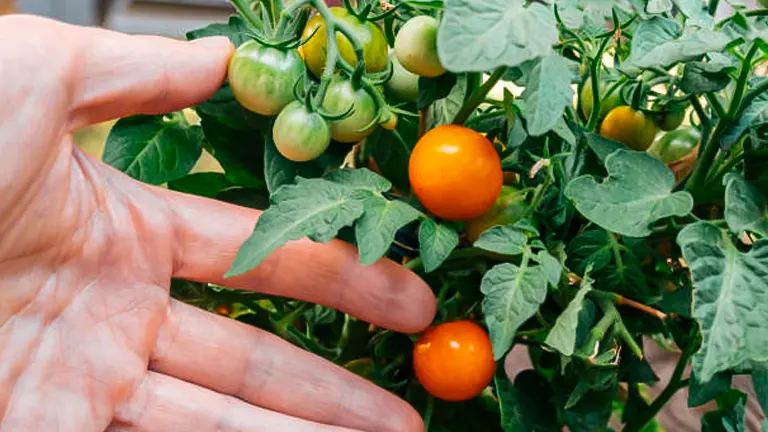
Selecting the optimal location for your upside-down tomato planter is a crucial step toward ensuring a successful garden. It is essential to consider the weight of the planters, which can exceed 50 pounds. Prioritizing access to sunlight is equally vital, aiming for a location with a minimum of 8 hours of direct sunlight daily to promote robust tomato growth. While house eaves and porch roofs are commonly secure hanging options, it is recommended to meticulously analyze sun and shade patterns. Confirm that the chosen location not only supports the weight but also provides consistent sunlight exposure throughout the day. If wind poses a concern in your area, choose a sheltered spot to protect your hanging tomato planter from potential disruptions.
Additional Tips:
- Wind Protection: In areas prone to wind, consider implementing a windbreak or selecting a location shielded from strong winds to prevent potential damage to both the planter and delicate tomato plants.
- Microclimate Considerations: Pay attention to microclimates within your garden; factors such as nearby structures or trees can create variations in temperature and sunlight.
- Seasonal Adjustments: Anticipate seasonal changes; what might be a sunny spot in spring could become shaded in summer due to the sun’s shifting position. Adjust your hanging location accordingly.
- Adjustable Hanging Mechanism: Utilize an adjustable hanging mechanism to fine-tune the height of your upside-down planter, ensuring it remains at the optimal distance from the ground throughout the growth cycle.
- Regular Observation: Periodically observe the selected location throughout the day to confirm that it consistently receives the required amount of sunlight, especially as the seasons change.
2. Choosing the Right Container

Choosing the right container is a crucial factor in the success of growing tomatoes upside down. Your options range from simple five-gallon buckets to attractive decorative containers and fabric pots. Emphasize lightweight materials like plastic or fabric to reduce the overall weight of the planter, ensuring it is easier to handle and more stable. During preparation, carefully cut a three-inch hole at the base of the container to facilitate the emergence and growth of the tomato plant in its inverted position. This thoughtful selection of containers establishes the foundation for a strong and thriving upside-down tomato garden.
Additional Tips:
- Drainage is Key: Ensure the selected container has adequate drainage holes to prevent waterlogging, maintaining the right balance of moisture for optimal tomato growth.
- Weather-Resistant Materials: If your upside-down planter is exposed to the elements, opt for weather-resistant materials to prolong the container’s lifespan and maintain its structural integrity.
- Size Matters: Consider the size of the container in relation to the tomato variety you’re growing. Larger varieties may require more space for root development, ensuring healthier and more productive plants.
- Aesthetic Appeal: If aesthetics matter to you, choose a container that complements your garden’s visual appeal. Decorative containers can be both functional and visually pleasing.
- Insulation Properties: In regions with extreme temperatures, consider containers with insulation properties to protect the roots from temperature fluctuations and promote stable growth.
3. Transplanting with Care
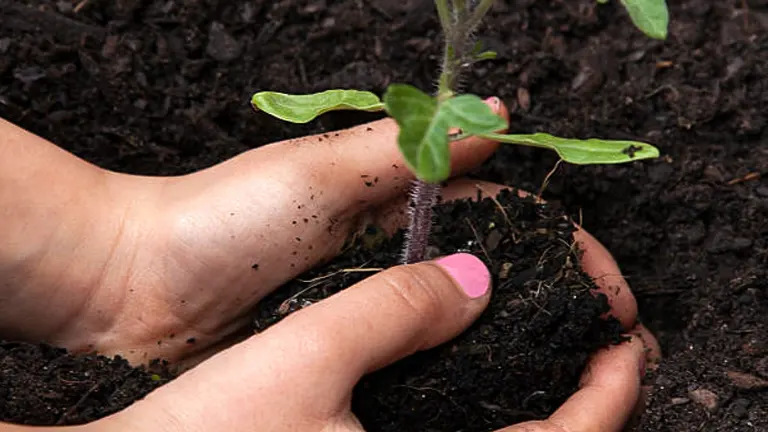
Achieving a successful transplant is a crucial step in the upside-down tomato growing process. Wait patiently until your tomato plants reach a height of around one foot before carefully moving them into the upside-down container. Use lightweight potting soil to reduce stress on the hanging support structure. With great care, gently remove the plants from the soil, ensuring the root ball is free, and precisely place them in the hole at the bottom of the upside-down container. This careful transplanting method establishes the foundation for the robust growth of your inverted tomato garden.
Additional Tips:
- Minimize Shock: To reduce transplant shock, water the plants thoroughly before transplanting and avoid transplanting during the hottest part of the day.
- Supporting Weak Stems: If your tomato plants have weak stems, consider providing additional support, such as staking or using tomato cages, to prevent damage under the weight of the growing fruit.
- Maintain Adequate Spacing: Ensure proper spacing between transplanted tomato plants to allow for optimal air circulation, minimizing the risk of diseases and promoting healthy growth.
- Watering After Transplant: Water the transplanted tomatoes immediately after planting to settle the soil and provide essential hydration to the newly positioned plants.
- Mulching for Moisture Retention: Apply a layer of mulch around the base of the transplanted tomatoes to retain moisture, regulate soil temperature, and deter weed growth.
4. Watering and Soil Management
Effective watering and soil management are crucial for the successful growth of upside-down tomato plants. Due to increased air circulation in this distinctive growing approach, these plants need more frequent watering to counter the rapid drying of the soil. Regularly checking the moisture levels in the growing hole is vital, enabling timely adjustments to the watering routine. Using lightweight potting soil not only helps prevent issues related to moisture but also ensures excellent drainage, reducing the risk of waterlogging.

To enhance soil management further, consider adding a layer of mulch around the base of the upside-down tomato plants. Mulching acts as a protective barrier, regulating soil temperature, minimizing weed growth, and aiding in moisture retention. Additionally, introducing organic matter into the potting soil can improve water retention and make essential nutrients more available for the growing tomatoes.
Additional Tips:
- Consistent Moisture: Maintain consistent soil moisture levels, avoiding extremes of dryness or waterlogging, which can adversely impact tomato plant health.
- Water at the Base: Direct water at the base of the plants to minimize the risk of fungal diseases and promote efficient water absorption by the roots.
- Fertilization Schedule: Implement a regular fertilization schedule, using a balanced fertilizer to provide essential nutrients for robust tomato growth.
- Adjust Watering in Different Seasons: Adapt your watering frequency based on seasonal changes; hotter seasons may require more frequent watering, while cooler periods may necessitate less.
- Regular Soil Checks: Periodically assess the soil composition and health to identify any signs of nutrient deficiencies or imbalances, addressing them promptly for optimal plant development.
5. Companion Planting
Enhance the success of your upside-down tomato garden through strategic companion planting. Introduce well-suited companions like basil, lettuce, spinach, onions, chives, and garlic to foster a harmonious environment. Beyond adding aesthetic value, these plants serve as vigilant protectors, warding off common pests and diseases that could threaten your tomato crop. Their aromatic qualities act as natural repellents, promoting robust tomato growth.
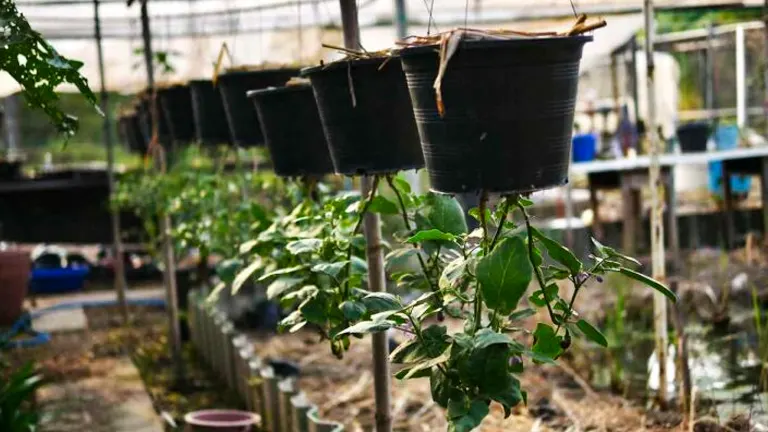
However, exercise caution in companion selection by avoiding potatoes and brassicas, such as cabbage and kale. These plants may not align effectively with tomatoes, potentially leading to resource competition or increased vulnerability to specific pests and diseases.
Additional Tips:
- Diverse Flowers: Add various flowers to your upside-down tomato garden to attract helpful insects like bees and ladybugs, supporting pollination and pest control.
- Herb Pairings: Plant herbs like oregano and rosemary alongside tomatoes; not only do they repel pests, but they also enhance the flavor of tomatoes.
- Consult Planting Charts: Refer to companion planting charts for tomatoes to assist you in choosing suitable companions and avoiding incompatible pairings.
- Successive Planting: Practice successive planting to ensure a consistent supply of companion plants throughout the growing season, fostering a sustained and balanced ecosystem.
- Rotate Crops: When growing tomatoes in the same area over multiple seasons, employ crop rotation to reduce the risk of soil-borne diseases and preserve soil health.
6. Pruning for Optimal Growth
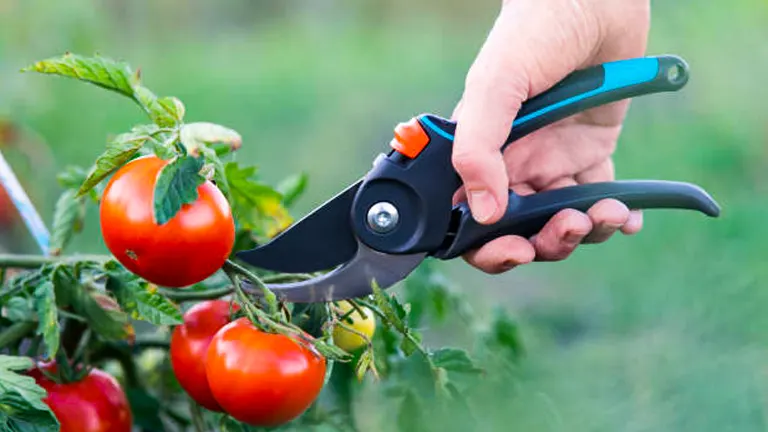
Pruning is a crucial aspect of optimizing the advantages of growing tomatoes upside down. When your plants reach approximately 12 inches in height, start eliminating any side shoots or suckers emerging from the leaf axils. This practice directs the plant’s energy toward vertical growth, resulting in a more robust stem and improved fruit production. Consistently examine your hanging tomato plants, removing any dead or yellowing leaves during pruning to ensure the overall health of the plant is maintained.
Additional Tips:
- Focus on Main Stem: Prioritize the main stem for vertical growth by removing lateral shoots regularly. This helps maintain a more organized and manageable plant structure.
- Sterilize Pruning Tools: Keep your pruning tools clean and sharp. Sterilize them with rubbing alcohol or a diluted bleach solution between uses to prevent the spread of diseases.
- Prune Strategically: Aim for a balance in pruning; removing excessive foliage may expose fruits to direct sunlight, leading to sunscald. Maintain enough foliage to provide some shade to developing fruits.
- Train Vines for Support: Guide tomato vines along the hanging container’s surface or use gentle ties to secure them. This prevents tangling and ensures a more organized growth pattern.
- Pruning After Harvest: After harvesting, consider a more aggressive pruning to remove spent stems and encourage fresh growth for subsequent fruiting cycles.
By following these comprehensive guides, you’ll be well-equipped to embark on a successful journey of growing tomatoes upside down, optimizing space and reaping the benefits of this innovative gardening technique.
Benefits of Growing Tomatoes Upside Down
- Space Efficiency: Growing tomatoes upside down offers a space-efficient alternative for gardeners with limited room. By suspending the plants in hanging containers, this method allows individuals to cultivate tomatoes even in small spaces, such as balconies, patios, or areas with restricted ground space. The vertical orientation maximizes the use of available room, making it an excellent solution for urban and container gardening.
- Disease Prevention: One of the notable benefits of upside-down tomato growing is the reduction in soil-borne diseases. By utilizing clean potting soil in the hanging containers, the risk of pathogens that commonly afflict tomatoes from the ground is minimized. This preventive measure contributes to creating a healthier growing environment for the tomatoes, potentially leading to higher yields and better plant vitality.
- Natural Pest Deterrence: The hanging nature of upside-down tomato plants acts as a natural deterrent to pests. Insects find it challenging to reach the suspended tomatoes, offering a protective barrier against common garden pests. This natural defense mechanism reduces the reliance on pesticides and fosters a more eco-friendly and sustainable approach to tomato cultivation.
- Improved Sunlight Exposure: Upside-down tomato growing provides improved sunlight exposure for the plants. By suspending them from house eaves or porch roofs, gardeners can strategically position the containers to receive direct sunlight for more than 8 hours a day. This ample sunlight exposure is crucial for robust photosynthesis, enhancing the plant’s overall health and supporting optimal fruit production.
- Enhanced Air Circulation: The hanging configuration of tomatoes encourages enhanced air circulation around the plant. This increased airflow helps prevent issues like fungal diseases, as it reduces the likelihood of stagnant, humid conditions that can promote such problems. Improved air circulation also contributes to stronger stem growth, creating a more resilient and structurally sound tomato plant.
- Sturdy Stem Development: Growing tomatoes upside down promotes sturdy stem development. As the plant grows vertically, the stem strengthens to support the weight of both the foliage and the developing fruits. This structural reinforcement not only prevents the plant from bending or breaking under its own weight but also provides better stability in variable weather conditions, such as strong winds.
- Fruit Protection: The inverted growth pattern naturally protects the developing fruits. Hanging tomatoes prevent direct contact with the ground, reducing the risk of soil-borne diseases and minimizing the chances of fruit rot. This elevation also safeguards the tomatoes from certain crawling pests, enhancing the overall quality and cleanliness of the harvest.
- Easy Harvesting: Upside-down tomato growing facilitates easy harvesting. With the tomatoes hanging at eye level or above, gardeners can conveniently pluck ripe fruits without the need to stoop or bend. This accessibility simplifies the harvesting process, making it more enjoyable and efficient, especially for individuals with mobility issues or those who prefer a less strenuous gardening experience.
Embracing the benefits of growing tomatoes upside down not only addresses practical challenges but also contributes to a healthier, more productive, and environmentally conscious approach to tomato cultivation.
Drawbacks of Growing Tomatoes Upside Down
- Limited Tomato Variety Options: One drawback of growing tomatoes upside down is the limited selection of tomato varieties suitable for this method. Larger and heavier tomato varieties, such as beefsteak or certain heirloom types, may pose challenges as their weight can strain the hanging support structure. Gardeners interested in upside-down growing should prioritize smaller and more compact tomato varieties, like cherry or determinate types, to ensure successful cultivation.
- Container Weight and Stability: The weight of the hanging container, especially when filled with moist soil and laden with fruit, can be substantial. This poses a potential challenge for the stability of the hanging system. To address this, gardeners must ensure robust and secure hanging hardware, coupled with a sturdy mounting structure. In windy climates, the weight and hanging dynamics may require extra precautions to prevent the containers from swaying excessively or falling.
- Risk of Stem Damage: The inverted growth pattern of tomatoes can lead to potential stem damage, particularly during strong winds or due to the weight of the developing fruits. As the stems grow in a U-shape to orient the growing tips upward, the area along the stem where the U-turn occurs can be vulnerable. Adequate support and protection against harsh weather conditions are essential to prevent the risk of stem breakage or weakening, which could compromise the overall health of the plant.
- Challenges in Transplanting: Transplanting tomatoes into an upside-down container requires careful consideration. Waiting until the plants are around a foot tall before transplanting is advised to ensure the stems are sufficiently robust. Delicate handling during transplanting is crucial to prevent damage to the roots or stem. This process may be more intricate compared to traditional planting methods, necessitating extra care and attention during the initial stages of the plant’s growth.
- Increased Watering Requirements: Upside-down tomato plants have increased watering requirements due to improved air circulation, causing the soil to dry out more rapidly. Gardeners must monitor the moisture levels in the growing hole daily and provide adequate water to prevent the soil from drying excessively. This heightened need for watering demands consistent attention, and failure to meet these requirements can lead to stress on the plants and negatively impact their growth and fruit production.
- Complexity in Container Preparation: Preparing the upside-down container for tomato cultivation requires specific steps and considerations. Choosing or creating a suitable container with a three-inch hole at the bottom is essential for the plant’s emergence and growth. Adding additional features, such as a screen or fabric to cover the hole, introduces complexity in the preparation process. While these measures prevent soil spillage, they add an extra layer of detail that gardeners must attend to during the setup phase.
- Visual Aesthetic Considerations: Growing tomatoes upside down may pose challenges in terms of the visual aesthetic of the garden or outdoor space. Hanging containers may not align with certain gardening preferences or landscape designs. The unconventional appearance of tomatoes suspended in mid-air may not suit every gardener’s taste, and considerations for the overall visual harmony of the garden should be taken into account.
Understanding these drawbacks enables gardeners to make informed decisions and address potential challenges when opting for upside-down tomato growing methods. While the benefits are significant, a balanced assessment ensures a successful and enjoyable gardening experience.
Conclusion
In conclusion, growing tomatoes upside down offers a space-efficient and innovative gardening approach. While providing benefits like disease prevention and improved sunlight exposure, potential challenges, including limited tomato variety options and the risk of stem damage, should be considered. Careful planning, from selecting the right location to addressing stability concerns, is crucial for success. Embracing the method’s advantages, such as natural pest deterrence, ensures a rewarding gardening experience. By understanding both the pros and cons, gardeners can turn their spaces into thriving, hanging havens of greenery with this unique cultivation technique.
FAQs
- Can I grow any type of tomato upside down?
While smaller and compact varieties like cherry or determinate tomatoes are ideal for upside-down cultivation, larger varieties may strain the hanging support. Choose smaller types to ensure successful growth in hanging containers. - What’s the best location for hanging tomato planters?
Opt for a location with at least 8 hours of direct sunlight daily. Sturdy spots like house eves or porch roofs are common, but careful analysis of sun and shade patterns is crucial for optimal tomato production. - How do I prevent stem damage in upside-down tomatoes?
To minimize the risk of stem damage, ensure a secure hanging system and protect plants from strong winds. Choosing a sheltered location and providing extra support during windy periods can safeguard the plants. - Can I use any container for upside-down tomatoes?
Lightweight containers like plastic or fabric are preferable to reduce overall weight. A simple five-gallon bucket is popular, but ensure proper preparation by cutting a three-inch hole at the bottom for plant emergence. - Is there a risk of over-watering upside-down tomato plants?
Yes, frequent watering is required due to increased air circulation. Monitor the moisture levels daily and avoid over-watering. Using lightweight potting soil with good drainage helps regulate moisture. - Can I grow other plants with upside-down tomatoes?
Yes, consider companion planting with basil, lettuce, spinach, onions, chives, and garlic. These plants offer protection against pests. Avoid planting potatoes or brassicas, as they may not complement tomato plants effectively. - How often should I prune upside-down tomato plants?
Begin pruning when plants reach around 12 inches in height. Regularly remove side shoots and dead leaves to encourage vertical growth and maintain plant health. - Are there visual considerations for upside-down tomato gardening?
Yes, the hanging containers may have visual implications. Consider the aesthetic harmony of your garden, as the unconventional appearance of suspended tomatoes may not align with every gardener’s preference.
In closing, growing tomatoes upside down is a creative solution for small spaces, offering benefits like efficient use of room and disease prevention. With thoughtful planning, this unique method turns limited spaces into thriving green havens. Embrace the journey and enjoy the rewards of cultivating tomatoes in this unconventional way. Happy gardening!

Benjamin Brooks
Forestry AuthorGreetings! I'm Benjamin Brooks, and my journey over the past 15 years has revolved around the fascinating realms of content creation, expertise in snow clearing, and the intricate world of lumberjacking and landscaping. What began as a simple curiosity about the natural world and heavy machinery has evolved into a passionate profession where my love for crafting words intertwines seamlessly with my lumberjacking and garden skills.

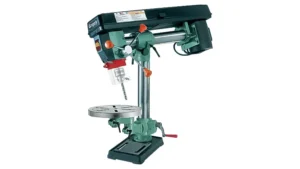


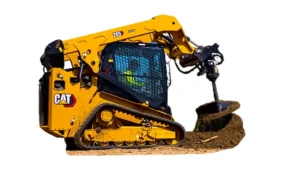

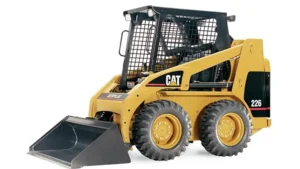
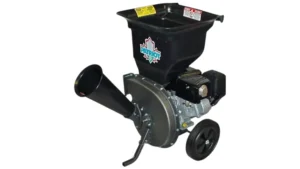
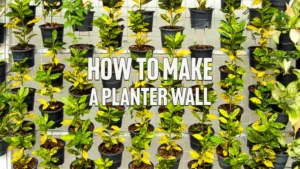
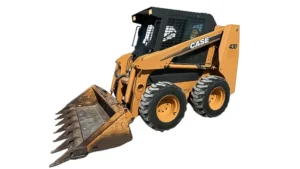



Leave your comment